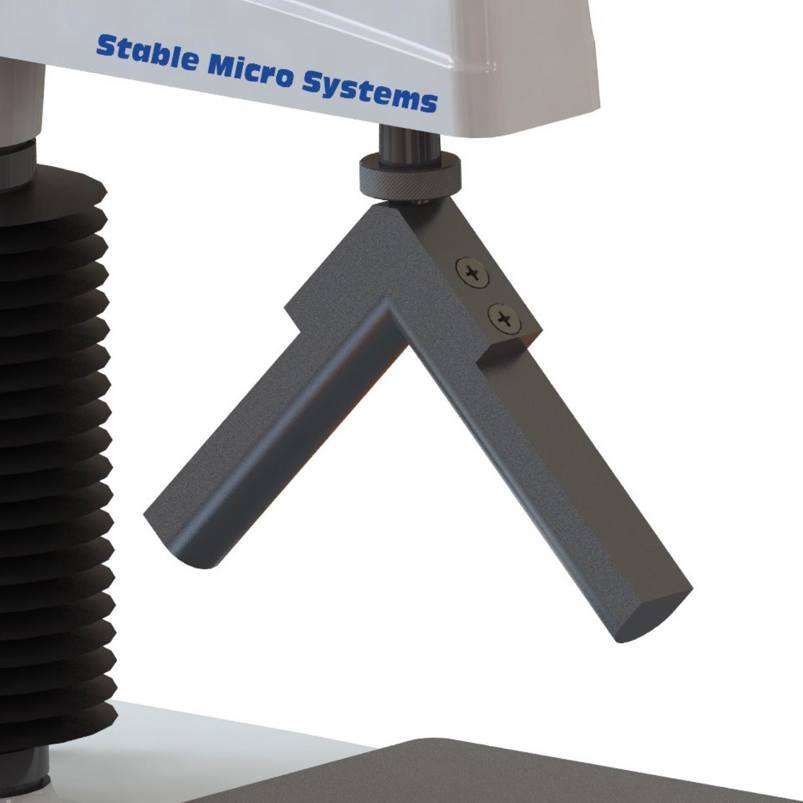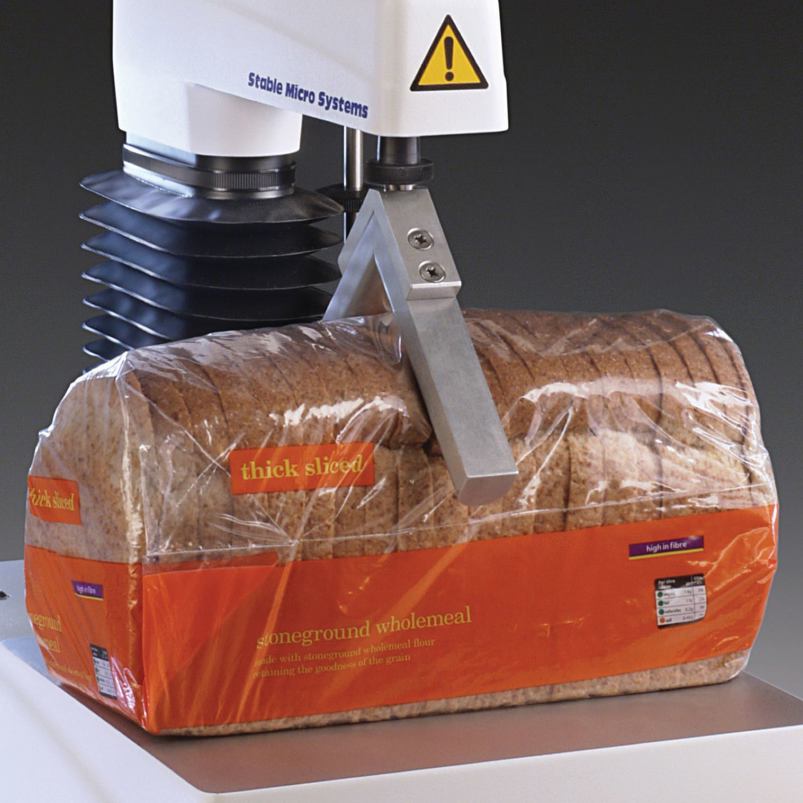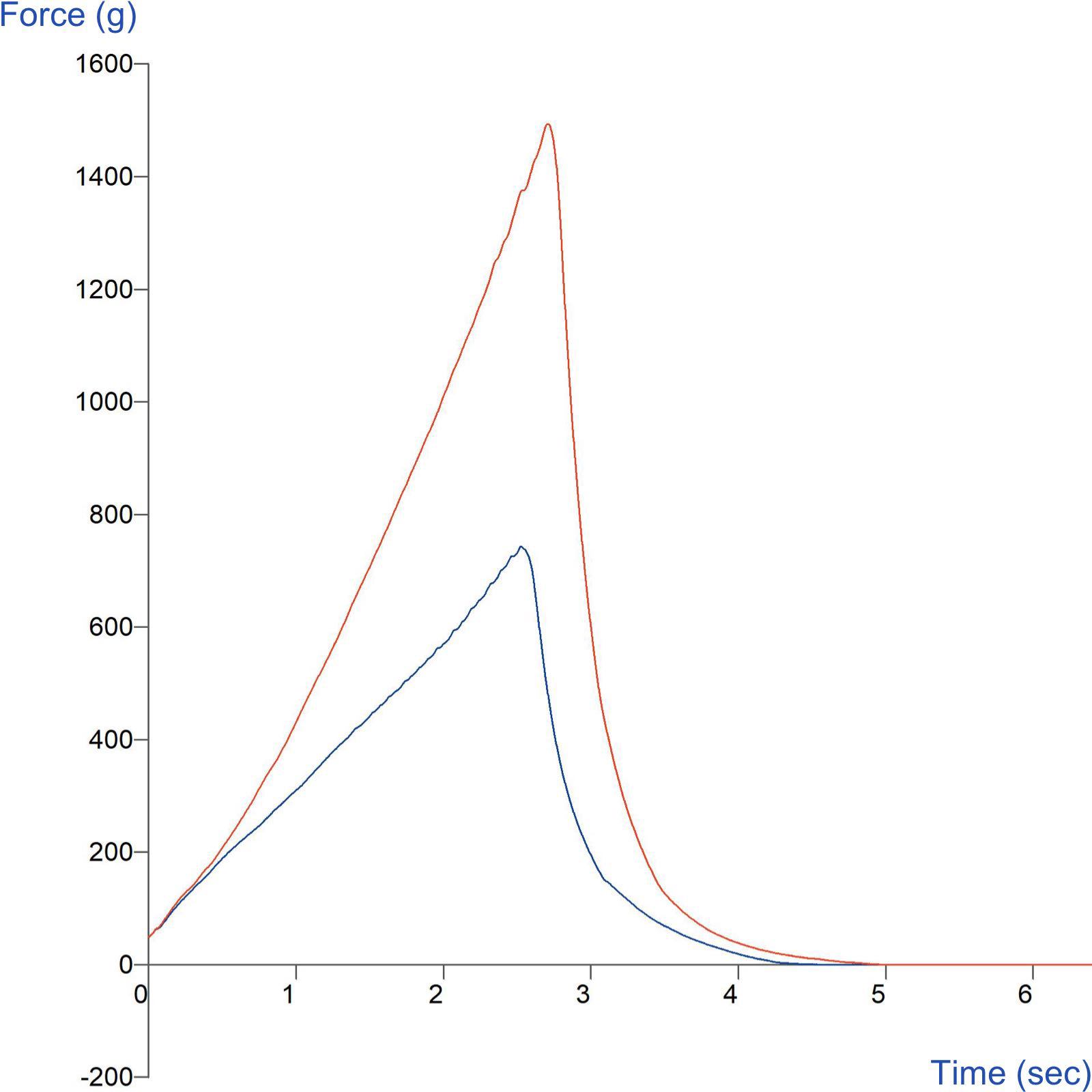Product overview
When searching for the perfect loaf, freshness is number one on the shopper’s agenda. This often directly correlates to how soft and springy the finished bread is. One of the most common ways to test the softness of a loaf is by squeezing it between the thumb and fingers, creating a ‘V’ shape with the hand (or palmer grasp). The Bread V Squeeze Rig imitates this process and allows manufacturers to carry out repeatable, scientific analysis of the freshness and appeal of their bread.
The rig comprises ‘V’ shaped rounded ‘fingers’, which are attached to the arm of the Texture Analyser. The rig is then lowered onto a packaged or unpackaged loaf, and the force required to compress the bread is measured. Post-test calculations are then used as an indication of freshness – the lower the force and higher the value of springiness, the fresher the loaf. This non-destructive freshness test offers simplicity, speed and ruggedness due to the fact that the loaf requires no sample preparation and can be determined within the packaging as is most commonly performed in store.
How does the Bread V Squeeze Rig work?
Ideal sample form
Whole loaves of bread or large recoverable materials.
Benefits and limitations
- This non-destructive method offers a quick and imitative test thereby simplifying data analysis.
- The test also offers simplicity and speed as the loaf requires no sample preparation and can be analysed within the packaging.
- Dimensions of standard rig are applicable to 'standard' bread loaf sizes.
Technical information
Installation
Full installation instructions are provided within the Education Zone of the latest Exponent/Connect software version and on the technical information sheet accompanying this product.
Chemical compatibility
Stable Micro Systems probes and attachments are commonly made from four materials: anodised aluminium (AA6082 T6), stainless steel (316 T), Delrin (acetyl copolymer) and Perspex (polycarbonate).
In general use, probes and attachments made from these materials will be suitable for testing food products and inert non-food materials.
The four materials listed above are not universally resistant to all types of chemicals and as such the compatibility of the probe/attachment material with the product (to be tested) must be established to prevent damage to the probes and attachments. If the compatibility of the product with the probe is unknown to the customer then the chemical information about the product (Material Safety Data Sheet or Product Data Sheet) should be submitted to Stable Micro Systems. Stable Micro Systems will then assess the suitability of the probe/attachment material for use with the product and advise accordingly. If this advice is not sought then Stable Micro Systems will not accept liability for probes/attachments damaged by chemical attack from the product being tested.
Cleaning and maintenance
All probes and attachments may be cleaned in warm (or hand hot) water using a mild detergent. A soft brush may be used but abrasive cleaning aids should be avoided. Stable Micro Systems products should not be microwaved or cleaned in a dishwasher.
Screw threads should be lightly lubricated after drying using a light lubricant, e.g. petroleum jelly, mineral oil. This will aid the fitting and unscrewing of the item. Each component of a probe or attachment should be wrapped separately when stored, to avoid scratching or chipping. This will safeguard against any unnecessary damage to the accessory.



